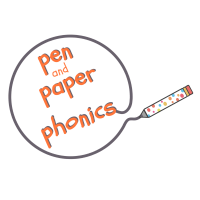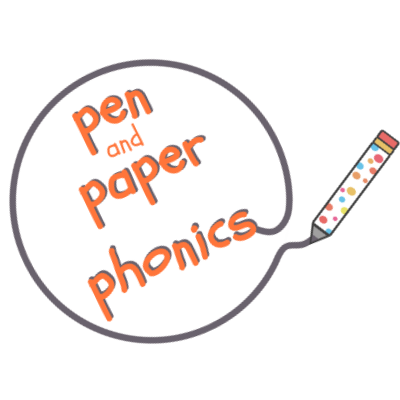The Basic Idea:
- This is a phonics target game.
- The goal is to teach, or to reinforce, how to read words or sounds written on flashcards.
- This is done by rolling a marble down a tube to hit (and read) a word or sound.
What you will need:
- A tube: this can be made out of card. It can also be the inner tube from a roll of kitchen towel or wrapping paper, or even a spare plastic, plumbing pipe.
- Marbles: or anything that rolls such as beads or a small ball.
- Flashcards: with the sounds or words that you want to practice written on them.
An example:

The content of the game.
In this example, the content I wanted to practice was letter sounds. In particular, letters that look the same.
- I chose three sounds that look very similar: /b/ /d/ and /p/. I could also have used /u/ and /n/, or /i/ and /j/.
- I made flashcards that had the letter and a picture prompt, as well as flashcards with just the letter (see below).
- I folded over the flashcards and set them upright on the floor around the room.

The method of the game.
- This is how to do the activity:
- Read through the flashcards before you start, thinking of different words that begin with these sounds.
- Look at their similarities, and try to think up ‘memory hooks’ to help to tell the difference between them. For example, ‘b’ has a ‘big belly’, ‘d’ has a tail like a dog.
- Use the flashcards with the pictures first.
- Call out a letter for your child to aim for. Hopefully, they hit the correct card -if not try again!
- After they hit it, they read the sound.
- Do this a few times, and then add in the flashcards that do not have pictures on them. Repeat the game with these flashcards.
- Then, call out certain features of the sound, such as, “Aim for the sound at the beginning of ‘boy'”. Repeat this a few times.
- After this, ask your child to choose the sound and aim for it. You could even swap roles so that they tell you the sound, and you aim for it.
- When all the sounds have been read, read through them all one more time before finishing the game.
Is this activity right for your child?
Sometimes it can be difficult to know if a certain activity will help your child. The questions below might help:
- Can they hear the beginning sounds in words? For example, can they hear that ‘ball’ begins with /b/?
- Have they begun to match sounds to letters? (See Letters and Sounds page)
- Do they occasionally mix up letters, for example say /i/ when they see ‘j’?
If the answer is ‘yes’, then this is a great reinforcement activity, to help them match sounds to letters.
To Note:
Not every game goes to plan! Here are some things to watch out for in this game:
- This game can quickly go a bit off track, in that the marbles can roll everywhere! But after a few tries, and reusing the same marble, often the game goes well.
- Sometimes using a checklist of the sounds that you want to ‘hit’ can help to maintain focus. So, when the sound has been read, check it off the list.
- It’s important that the flash cards are either folded over or upright against something immovable, otherwise the marble just glides over it and the game becomes hunt the marble!
How to Adapt:
…the content:
1. Consonant Clusters:
Consonant clusters are groups of two or three consonants that appear at the beginning and/or end of words, for example ‘fl’ in flag. You could write the consonant cluster on the flashcard and once the child has read it they can think of a word that begins or ends with the cluster.

2. Letter Sounds:
You could use this activity to teach new sounds. If you do this limit the new sounds to one or two and add in ones your child already knows.

3. CVC words:
You could have the letters you need to make various two or three letter words. Then tell your child to spell the word by aiming at each of the letters needed. This could go quite slowly, but it would be great for them to practice holding the word in their mind and sounding it out repeatedly.

4. Two-letter sounds:
You could use two-letter sounds, or digraphs. These are sounds that are made with two letters, even though they only make one sound. For example, /th/ in ‘that’.

5. Sight words:
In order to get practice in reading sight words that cannot be sounded out, you could use use flashcards with these words on them.

6. Upper case, lower case match:
For this you could upper case letters and ask your child to aim for the sound you call out. Or you could have both lower and upper case letters and your child aims for both letters that match, one after the other.

7. Common Syllables and Word Endings:
Syllables are really helpful to understand in order to read longer words. If a child recognizes common syllables, they don’t have to sound them out when they come across them in a word, which makes it easier and quicker to read the word. There are many common syllables such as ‘-est’ in biggest. So in this game, they could aim at the syllable that you call out.

8. Different spellings, same sound:
For example, /oi/ in coin, and /oy/ in boy, make the same sound, but are spelled differently. So you could have different ways of spelling the same sound on the flashcards, and then get your child to aim for the sound you call out.

9. Compound words:
A compound word is a word made up of two other words, for example ‘bedroom’ is made up of the word ‘bed’ and ‘room’. In this game, you could have different parts of words on the flashcards. You aim for one e.g. bed and your child has to aim for the one that makes sense e.g. ‘room’.

10. Sentences:
Put sentences on the flashcards, see which one they hit and then read it. Or have lots of words and see what sentences you can make up by hitting different words.

How to Adapt…the method:
You can play this game with points, writing the number of points you get for each word on the flashcard. Then add up the total at the end. Make the more difficult words or sounds worth more points.
You can also make it into a competition, with both of you trying to aim for the same one.
There you have it. A quick and easy phonics activity with lots of potential to adapt it to suit your needs.
This is how it looked when I did it in ‘real life’!

Previous Activities in Pen and Paper Phonics:


